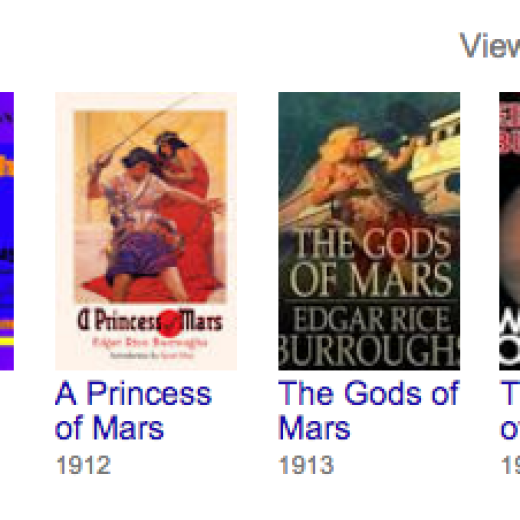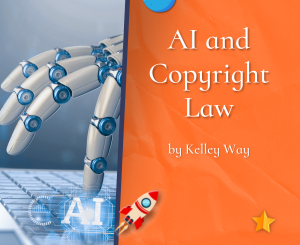Copyright Protection for Fictional Characters
 Welcome to the monthly series on artist entrepreneurship. Today we focus on copyright protection for fictional characters from our monthly guest columnist, Kelley Way, a lawyer specializing in literary law and other aspects of law. She’s also a writer! If you have general questions for Kelley on contracts or other aspects of literary law, be sure to comment below. And you can also email her, too.
Welcome to the monthly series on artist entrepreneurship. Today we focus on copyright protection for fictional characters from our monthly guest columnist, Kelley Way, a lawyer specializing in literary law and other aspects of law. She’s also a writer! If you have general questions for Kelley on contracts or other aspects of literary law, be sure to comment below. And you can also email her, too.
PS. A list of books on literary law can be found here.
And now for a bit of necessary legalese: Please note that this article does not constitute legal advice, and that an attorney-client relationship is not formed by reading the article or by commenting thereon.
***
Copyright Protection for Fictional Characters
In my previous articles on copyright, I talked about when a work is copyrighted, and when you can make use of someone’s copyrighted work. But what if you only wanted to use a character from someone’s copyrighted work, rather than the work itself? Can a character be protected under copyright law, outside of the work he/she came from? This question has been raised often enough that the courts have decided that they can, and have made two tests to determine under what circumstances.
- The Development Test (a.k.a. the Hand test, after the judge who came up with it). This test is fairly straightforward. The court just asks: Is the character sufficiently well developed and distinct? The more well developed the character, the more likely he/she can be protected under copyright law. This test was developed in the 2nd Circuit Court of Appeals (which covers Connecticut, Vermont, and New York), and is the more popular of the two tests.
- The Story Being Told Test (a.k.a. the Sam Spade test, since that was the character at issue the first time it was used). This test, in its original form, is much harder to meet. Here, the court asks whether the character “constitutes the story being told,” or whether the character is a “chessman” in the game of telling the story. Unless the story is a character study, the character almost certainly won’t pass the test (even Sam Spade failed). This test was developed by the 9th Circuit Court of Appeals (which covers California, Arizona, Nevada, Oregon, Washington, Hawaii, Alaska, Idaho and Montana), and is pretty much the only place where the test is used. However, it has been modified somewhat, so that the focus is not so much on whether the character makes the story, as whether the character(s) are more important than the story. The 9th Circuit has also decided that a group of characters may be able to pass this test. Even better, in 2003 the 9th Circuit decided that either one of these tests could be used in their hallowed halls, so as long as the character can pass one of these tests he/she can be protected. With any luck, that means this test will fall into disuse and die a long overdue death.
The last thing to consider on this topic is: What happens when a character is partially, but not completely, in the public domain? This happened with a popular radio and TV show, called the Amos ‘n’ Andy show. This show ran for decades, so when the earlier episodes went into the public domain, there was still a lot of material under copyright protection. When someone wanted to make a musical using the Amos ‘n’ Andy characters, the owner of the remaining copyrights sued. This was a bit of head-scratcher, but the court finally decided that whatever was in the public domain was up for grabs, but anything still under copyright protection could not be used without permission. So, the person could use anything found in the public domain episodes, but couldn’t use anything that was introduced in the later episodes that were still protected under copyright.
I hope this article has proven helpful, and if I’ve only managed to confuse you I’d be happy to clarify in the comments below.
***
Kelley Way was born and raised in Walnut Creek, California. She graduated from UC Davis with a B.A. in English, followed by a Juris Doctorate. Kelley is a member of the California Bar, and an aspiring writer of young adult fantasy novels. She can be contacted at KelleyAWay@gmail.com.
Others articles on the Writer’s Fun Zone by Kelley Way:
Top 10 Things Authors Need to Know About Contracts (April 2011)
All’s Fair in Love and War – But Not in Copyright Law (May 2011)
The Perils of Internet Posting (June 2011)
What is Trademark? (July 2011)
What is Copyright? (August 2011)
5 Legal Mistakes Authors Often Make (September 2011)








One of the reasons I chose Oz as my topic of fiction was precisely because of copyright issues. L. Frank Baum has been dead over 75 years, so all his work is public domain, which allows me to create just about anything in Oz that I want. It’s very rewarding and the only issue for me is avoiding anything that resembles the MGM 1939 Wizard of Oz movie.
That’s an excellent solution to copyright issues. Thanks for sharing!